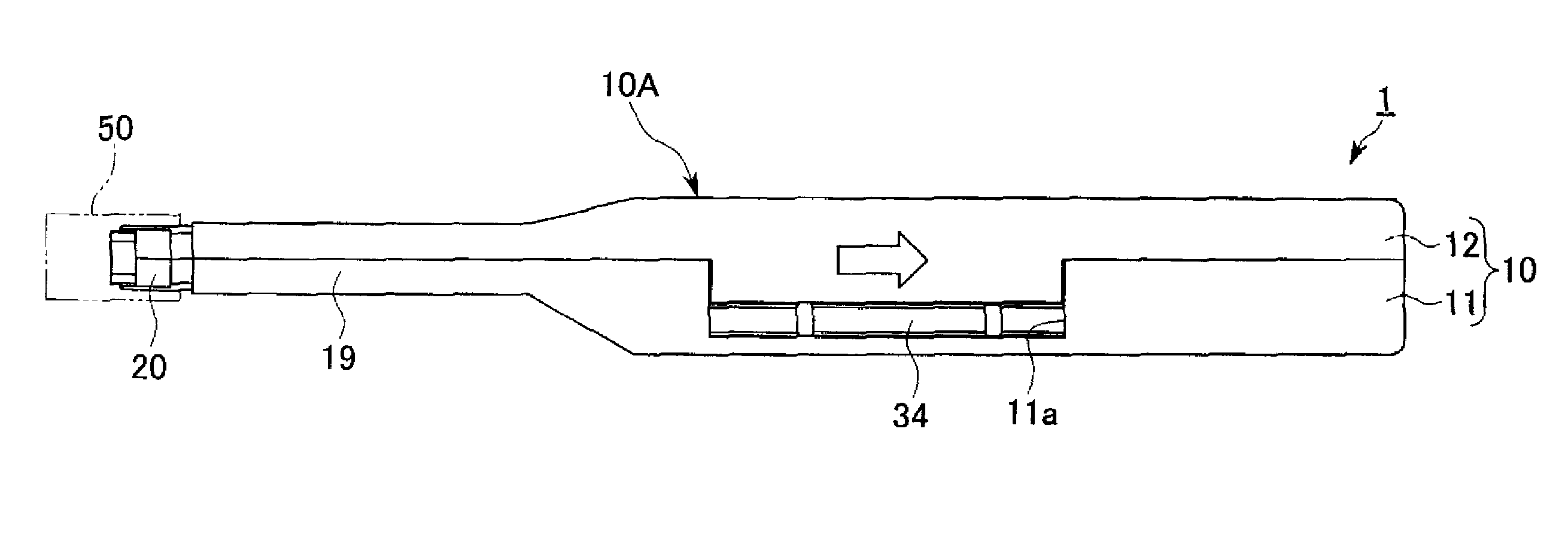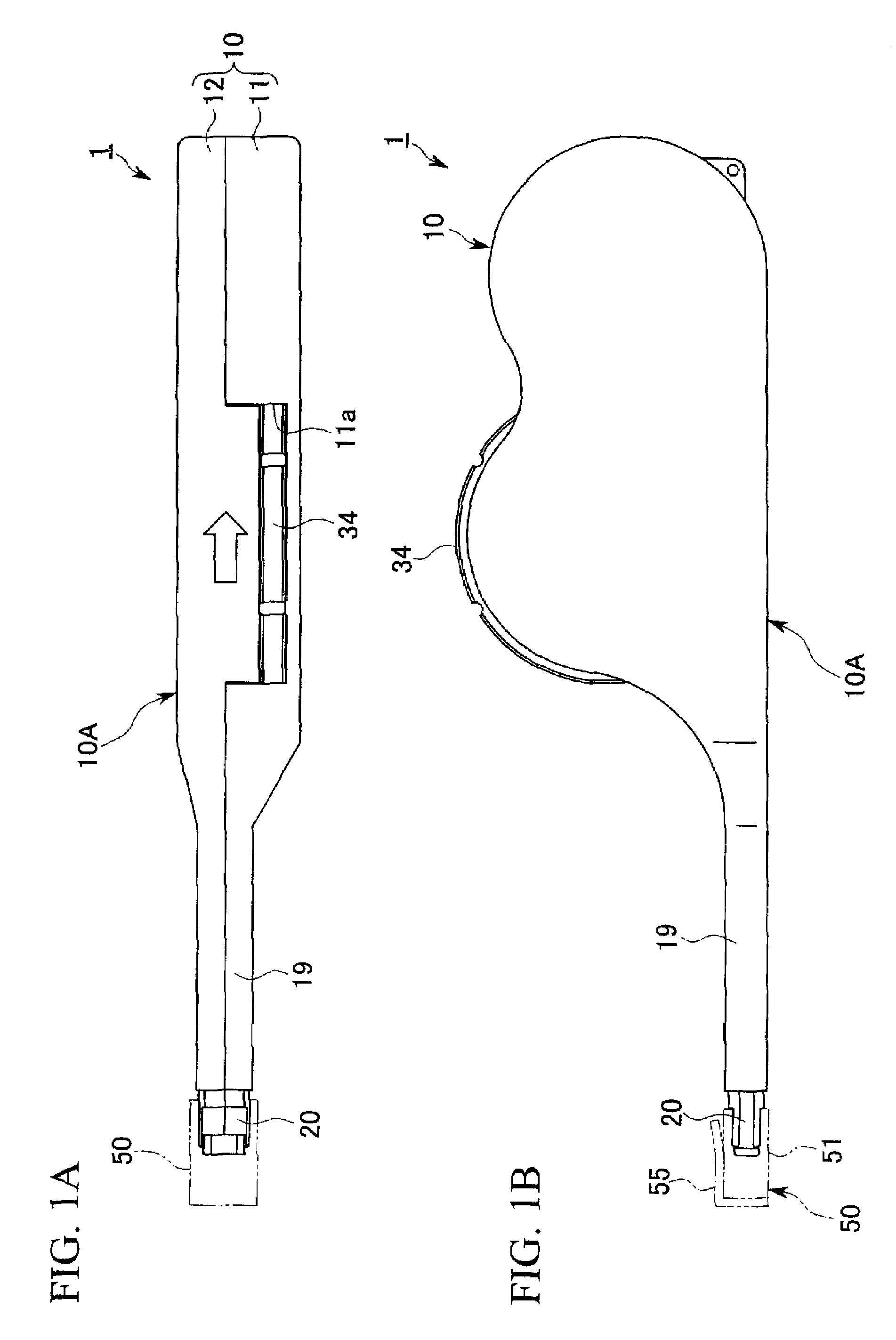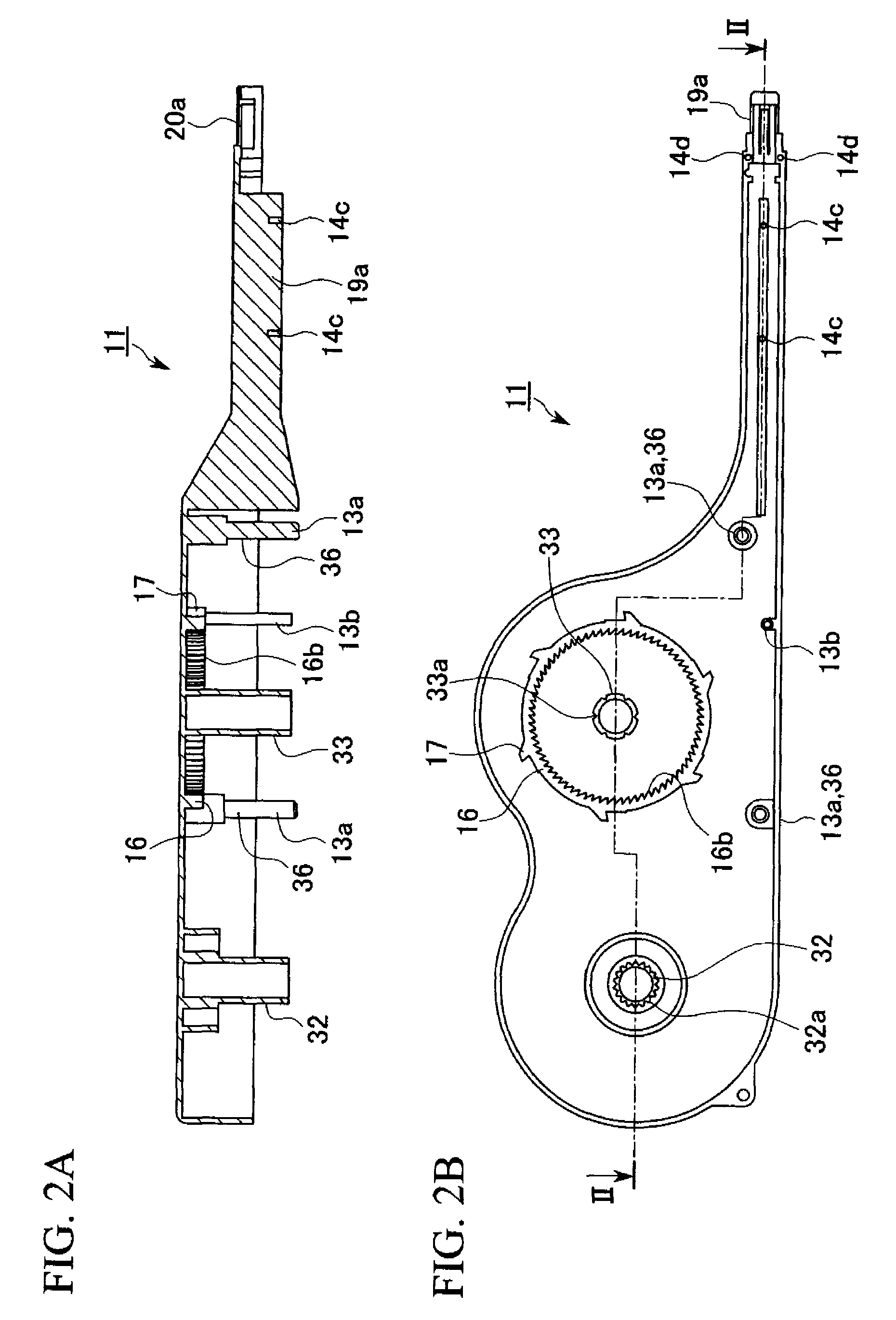Optical connector cleaning tool and optical component cleaning tool
a cleaning tool and cleaning tool technology, applied in the direction of cleaning machines, carpet cleaners, instruments, etc., can solve the problems of increasing transmission loss, contamination remains in parts of the joining end surface, and cleaning has not been performed reliably, so as to reduce contact resistance, excellent cleaning performance, and excellent cleaning performance
- Summary
- Abstract
- Description
- Claims
- Application Information
AI Technical Summary
Benefits of technology
Problems solved by technology
Method used
Image
Examples
Embodiment Construction
[0138]An optical connector cleaning tool (i.e., an optical component cleaning tool) in which the present invention has been applied will now be described with reference made to the drawings.
[0139]FIGS. 1 to 22 are views showing a first embodiment of the optical connector cleaning tool (referred to below simply as ‘cleaning tool’) of the present invention.
[0140]As is shown in FIG. 19 and FIG. 21, an optical connector plug 60 (an optical connector—also referred to below simply as an optical plug) and an optical connector adaptor 70 (connector positioning housing—referred to below on occasion simply as an optical adaptor) in which a cleaning tool 1 of the present embodiment is applied here are MPO-type (MPO: multifiber push on) optical connectors which are regulated by JIS C 5982 and the like.
[0141]The optical plug 60 is an optical connector plug having a structure in which an MT-type optical connector ferrule 61 (MT: mechanically transferable—referred to below simply as a ‘ferrule’) w...
PUM
 Login to View More
Login to View More Abstract
Description
Claims
Application Information
 Login to View More
Login to View More - R&D
- Intellectual Property
- Life Sciences
- Materials
- Tech Scout
- Unparalleled Data Quality
- Higher Quality Content
- 60% Fewer Hallucinations
Browse by: Latest US Patents, China's latest patents, Technical Efficacy Thesaurus, Application Domain, Technology Topic, Popular Technical Reports.
© 2025 PatSnap. All rights reserved.Legal|Privacy policy|Modern Slavery Act Transparency Statement|Sitemap|About US| Contact US: help@patsnap.com



